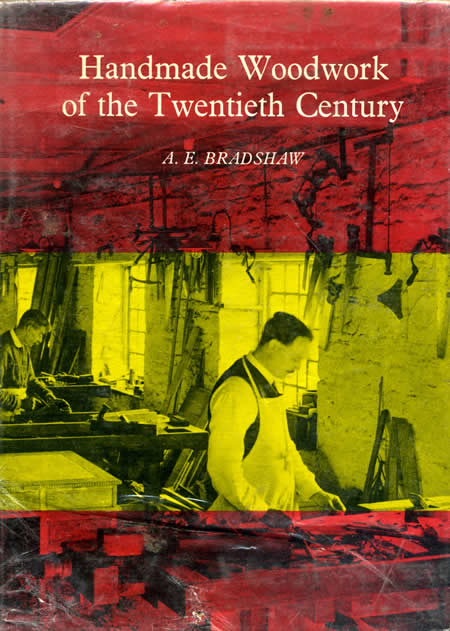
1 April 1988
Interior Design
The Arts and Crafts movement developed in England as a response to
several strands of 19th-century thought. politically, it was a revolt
against the miseries of industrialization, and the decline in quality
resulting from mass production. It was also a protest against the
encroachment of industrialism on the workman's way of life; a primary
goal was to improve living and working conditions for the ordinary
working man.
Socially, the movement was an attempt to codify the principle that a
nation's art was a symptom of its moral stability. Fine craftsmanship
was equated with etical vigor, and the search for an "English Art for
England" led to the adoption of Gothic as the best expression of the
national idiom. "Fitness for purpose was defined in relation to life
among the craftsmen and not to the world of industry and commerce in
general.
William Morris is generally recognized as the father of Arts and Crafts,
although A. W. Pugin and John Ruskin, who preceded him, strongly
influenced his thinking. All three men embraced medievalism as a style
to bring art back to the people. pugin was a respected architect, and
Ruskin was the most innovative and influential art critic of his time.
Morris was educated at Oxford where he met Edward Burne-Jones, an artist
who became a life-long friend. On a holiday with Burne-jones, Moris
decided not to enter the church, as he had planned, but to devote his
life to art. He became an architect, and joined the firm of G.E. Street.
Street's chief assistant was Philip Webb who later designed Morris's
house and collaborated with him in setting up Morris & Company. After
brief strints in architecture and painting, Morris realized his true
vocation as a pattern designer. In this field his talent was prodigious,
and he created wallpaper, fabrics, book decorations and designs for
tapes-try weaving. In 1861 Morris formed his own decorating firm, just
in time to prepare an exhibit for the International Exhibition in the
following year.
Wallpapers in vibrant colors and naturalists designs were among the
earliest products of the firm, along with Philip Webb's straight-line
furniture and the exotic stained glass panels of Burne-Jones, Dante
Rossetti and Ford Madox Brown. Fabrics in the same strong colors and
flowing patterns came along in the late '60s and tapestries and rugs in
the '80s. Morris's influence on all of the decorative arts of the second
half of the 19th century can hardly be over-estimated.
America had had its own perfect example of the Arts and Crafts ideal in
the Shaker communities in New York State at the end of the 18th century.
These isolated enclaves preached a philosophy of equality of the sexes,
spiritual purity and honest craftsmanship. In 1852 a chair factory was
founded to make furniture for outside sale; its principles were based on
the ideals of "regularity is beauty" and "beauty rests on utility." The
most important proselytizer of Arts and crafts ideals in america was
Gustav Strickley. Strickley had been trained in Syracuse, New York. as a
stonemason and furniture-maker; after a trip to Europe, where he met
several members of Morris & Co., he returned home to establish his own
workshops. He also began to publish a magazine called The Craftsman, the
first issue of which was a celegration of the artistic as well as the
social and aims of William Morris and his colleagues.
The chair pictured here is an unusual example of the creativity of
another Arts and Crafts designer, Charles Francis Annesley Voysey.
Voysey studied architecture at Dulwich College. In 1882 he opened his
own office, but concentrated first on decorative work rather than
architecture, selling his first patterns for fabrics and wallpaper. In
1884 he joined the Art Workers' Guild and soon after he designed his
first house, for which he created most of the furniture, the decoration
and the fittings. His characteristic style -- simple, linear and with
almost no surface embellishment -- was to be widely copied.
The prototype of this chair, which was made in 1902, was the only piece
of upholstered furniture Voysey ever designed. Antiques dealer David
Allan, who bought the chair in London because he fell in love with it,
and then discovered that it was a Voysey, describes it as almost
decadent in its luxury. It is more formal and lavish than the simple,
austere, unpretentious furniture Voysey became known for. "But," he adds
with a smile, "it's a wonderful piece of furniture, created by a
splendid craftsman at his hight of power."
PHOTO: An extraordinary piece of Arts and Crafts furniture designed by
C. F.A. Voysey and exhibited by David Allan antiques at 812 Broadway,
New York.
COPYRIGHT 1988 Reed Business Information. This material is published
under license from the publisher through the Gale Group, Farmington
Hills, Michigan. All inquiries regarding rights should be directed to
the Gale Group. For permission to reuse this article, contact Copyright
Clearance Center
No comments:
Post a Comment